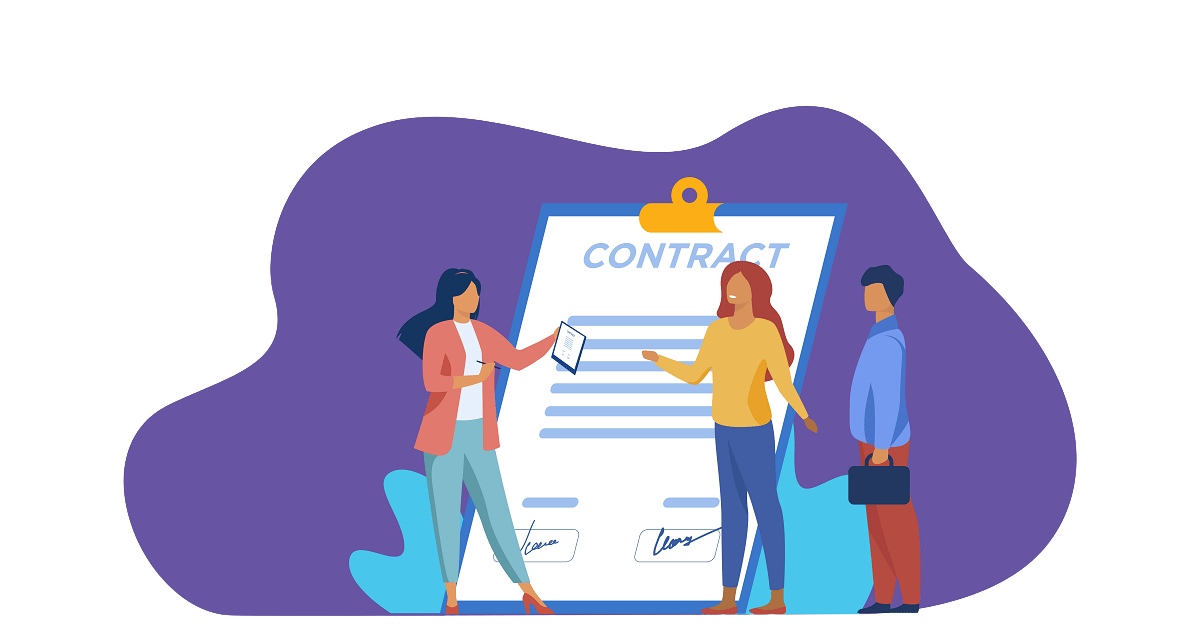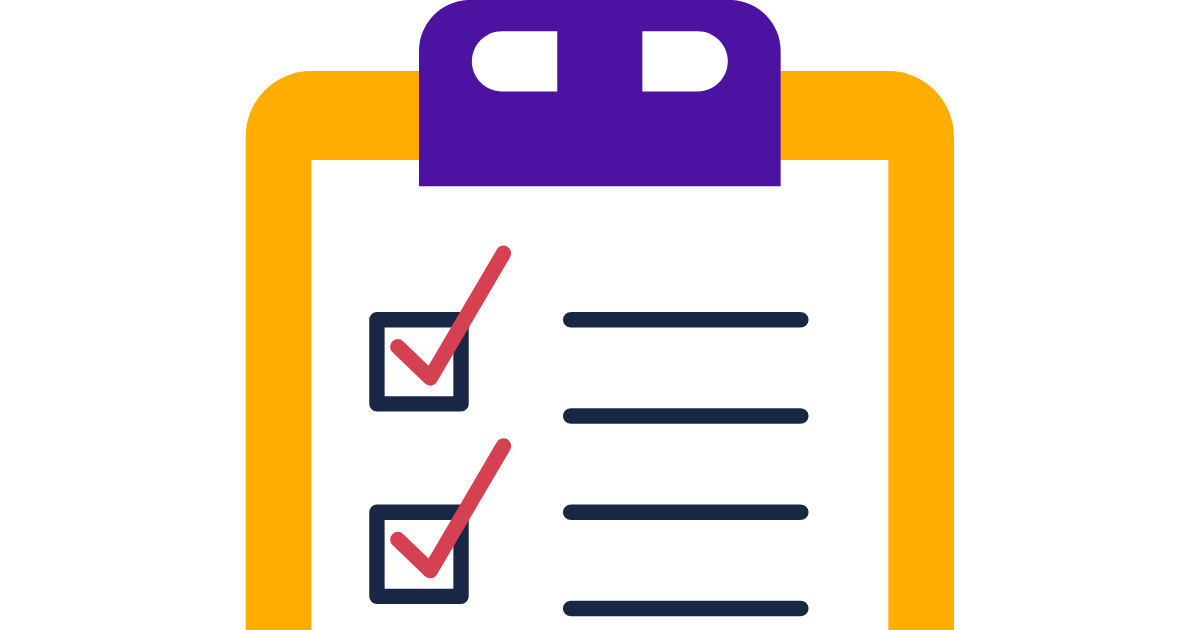There comes a time in everyone's life when retirement is no longer some far-off idea. Instead, it's right around the corner.
We know you have questions, including:
- What types of retirement solutions are there?
- How much do I need to retire?
- Should I pay off my debt or save for retirement?
We're here to explain some key concepts around the retirement planning process. While not investment advice, this retirement planning information can help you get answers to some of your most common retirement questions, learn how to start retirement planning and provide checklists to help you navigate the process.
Download Preparing for the future: Retirement planning basics

What is retirement planning?
Retirement planning describes the actions you take to financially prepare for life after you have stopped working. Retirement planning involves estimating how much money you will need in retirement by calculating expenses and accounting for unexpected events, setting realistic goals for your retirement and identifying the best retirement savings solutions to help you achieve those goals.
Retirement planning will differ from person to person. But one thing is true for everyone: it's never too early to start planning for retirement.
The average retirement age for men is 65 and the average expected retirement age is 66.1 According to the Social Security Administration, a woman who turned 67 in 2021 can expect to live until she's 87 years old.2
That's an additional 20 years of retirement to plan for, starting now.
Regardless of when you plan to retire, there are steps you can take right now to start planning — even if it's decades away.
Ready to learn more? Let's get started!

Types of retirement accounts
A retirement account is an investment account that helps you save for retirement. Many people have these accounts through a job, such as a 401(k) or pension. You can also establish your own investment account and make contributions for future retirement income.
There's no one-size-fits-all when it comes to planning for retirement. Instead, you want to take the time and figure out the best type of retirement account for your needs.
With that in mind, let's review the most common types of retirement accounts.
401(k)
One of the most common retirement accounts is a 401(k), which is the retirement account often offered by employers. If your job provides one, you'll receive information on plan eligibility and how to enroll.
401(k)s allow employees to make regular contributions that are tax-deductible to an investment account used for retirement. Many employers offer 401(k) matching programs whereby an employer sets a pre-determined amount to match employee contributions. For example, the employer might match $.50 for every contributed dollar up to a specified percentage of your income.
If you leave your job before you retire, ask about your 401(k) with your employer. You might be able to leave it in that employer's plan or roll it over into a new plan.
IRA
Anyone can open an individual retirement account (IRA). Unlike a 401(k), it doesn't have to be offered through your employer.
The most common IRAs are traditional IRA and Roth IRAs.
A traditional IRA is a tax-deferred retirement option, meaning you make contributions with your pre-tax dollars and don't pay taxes until the money is disbursed. You are taxed at your current income tax rate at the time of withdrawal.
With a Roth IRA, you contribute after-tax dollars. However, you can withdraw your contributions anytime without taxes or penalties. Earnings on contributions can also be withdrawn without taxes or penalties if the IRS's conditions are met.
The main difference between these two is that a traditional IRA allows you to save for retirement with pre-tax dollars, while the Roth IRA is an after-tax retirement account. That means that you can make qualified withdrawals in retirement tax-free. Roth IRAs also come with income limits that may restrict contributions.
Once you hit the age of 59 1/2, you can begin withdrawing from your IRA without paying a penalty fee.
Pension plan
With a pension plan, your employer funds and invests contributions for you. They also define the income that you will get from the pool of investments based on a set calculation that can include total earnings, age and years worked at the company.
Annuities
Annuities allow you to turn a lump sum or series of payments into a steady retirement income stream. The most common uses of annuities for retirement planning are their tax-deferred growth and potential for guaranteed income.
Want to know more about your retirement account options? Dig deeper into the differences between 401(k)s, IRAs and annuities.

Understanding annuities
There can be lots of confusion around exactly what annuities are and how they work.
We've broken it down the basics — here's what you should know.
What is an annuity?
An annuity is essentially a contract between you and an insurance company. They allow you to convert a lump sum of money into guaranteed income for the rest of your life or to invest over time and later convert the annuity contract's value into guaranteed income payments.
Types of annuities
While not a comprehensive list of all types of annuities, here are four types of annuities that investors can choose from when it comes to purchasing these instruments.
- Immediate annuities are funded with a lump-sum and begin paying a stream of income immediately upon issuance for either a set period or as long as the annuitant is living.
- Fixed annuities pay a guaranteed rate of interest for a set period and can offer various interest rate guaranteed periods and payout options.
- Fixed indexed annuities calculate an interest crediting rate according to a formula based on the performance of an underlying financial benchmark, such as the S&P 500 Index.
- Variable annuities the money invested in this type of annuity is allocated among a selection of mutual fund-like subaccounts, which may rise or fall according to market conditions.
Annuity terms
Here are some common terms you'll want to know about annuities.
- Owner — The investor who purchases the contract and pays the premiums into it.
- Annuitant — The person whose life expectancy is used to calculate the payout from the contract at annuitization.
- Payee — The person who receives the annuity payments at annuitization.
- Accumulation period — The period when the annuity grows. Additional premium payments may be made during this time, depending on the terms of the contract.
- Annuity payout period — The period where the payee receives a payout from the contract at annuitization.
- Annuitization — This is when the annuity contract is permanently converted into a guaranteed stream of income payments.
- Death benefit — A benefit included within an annuity that will pay out a specific amount, according to the contract, to the beneficiary upon the annuitant's death before annuitization.
Don't let a lack of information keep you from choosing the right option for your retirement. Work with your financial professional to determine if an annuity is right for you. You can also learn more about annuities from Protective.

How much money do I need to retire?
It's essential to take the time now to get a better understanding of how much money you might need to ensure that you save enough to retire on your terms.
Here are some basics to keep in mind to help determine what you need.
1. Prepare for the potential of a long retirement.
Millions of baby boomers can expect to have 20 years (or more) of retirement. The earlier your start saving, the better you can prepare for it.
2. Don't forget about expenses in retirement.
As you think about your long-term retirement planning, also realize you might need to set aside extra savings for additional costs. You never know when you'll need money to cover expenses such as health care, inflation and taxes, or to dip into your emergency fund for a new roof or car repairs. The following expenses may help determine how much money you will need for retirement.
Fixed expenses
Fixed expenses are costs that are the same (or around the same) every month or every year you have to pay them.
Here are common examples of fixed expenses:
- Mortgage payment
- Monthly rent
- Monthly property taxes
- Homeowner's or renter's insurance
- Utility bills
- Car payments and insurance
- Life, health or disability insurance
Variable expenses
You can pick how much you want to spend on these items each month, such as your daily latte with variable expenses.
Here are examples of variable expenses:
- Groceries
- Personal care items
- Gas
- Parking
- Clothing
- Dining out
- Hobbies
Irregular expenses
Irregular expenses are expected, but the timing and actual costs can be hard to predict. Health care costs would be one example. You need to budget for irregular expenses, so you know you have the funds to cover them.
Some other examples of irregular expenses include:
- Vet bills
- Travel or vacation expenses
- Car maintenance
- House maintenance/repairs
- Annual or quarterly property taxes
How to classify certain expenses
If you are struggling to determine what category a particular expense falls under, here are some thoughts to consider that can help:
- Is this expense the same and does it occur regularly? Fixed.
- Can I control how much I spend on this? Variable.
- Should I be saving for this item in advance? Irregular.
Once you have a handle on your expected expenses, it becomes much easier to create a plan that will help you save.
3. Ask these questions to determine how much you should save:
- What sources of income do you expect to have in retirement?
- What kind of lifestyle do you want to live in retirement?
- Do you plan to "age in place" (remain in the same home when you retire)? If so, will your mortgage be paid off by the time you retire?
- Do you want to work part-time in retirement (potentially reducing the amount you'll need to save)?
- Will your kids (or your parents) need financial help from you?
- Should you consider moving to a less-expensive area or downsizing to a smaller home to save money?
4. Do some math.
Many retirees underestimate what expenses will be in retirement. The average monthly Social Security benefit received by retired workers is $1,837.3How much more will you need to live the way you want?
5. Don't forget about life insurance.
Consider your life insurance coverage options. With a policy on yourself or your spouse, you or your loved ones have some financial protection in the event of your untimely death.
6. Take advantage of employer-sponsored plans.
Many people kickstart their retirement savings through 401(k)s and similar plans at work. Contributions come out of your paycheck, so it's easy to start saving on a regular basis.
7. Don't miss out on employer matching.
If your company offers a 401(k) with employer matching, be sure you're taking advantage of it. Employer matching is essentially free money, and over time can add a significant amount to your savings.
8. Work with a financial professional.
A qualified financial professional can be a valuable partner as you go through the process of saving for retirement. They can help you review your finances, debt and savings rate and come up with a plan to help you reach your specific retirement goals.
Make a plan, set some goals and stick with it. Retirement can be expensive. It's never too early or too late to start saving. Learn more.

How to plan for all three phases of retirement
It's critical to think about the long term when it comes to retirement planning. You also need to realize that planning doesn't stop once you retire — your retirement savings and budget needs will continue to change as you age and move from one phase of retirement to another.
Plan for these three phases of retirement now so you'll be more prepared for the future.
1. The honeymoon phase
After years of working hard and diligently adding to your retirement savings, it's time to start enjoying everything you've been putting off for decades. While it's a great time to begin embracing the freedom you have to travel more or take up new hobbies, you also need to keep an eye on your spending.
It's critical to create a retirement budget, so you're not spending a disproportionate amount of your savings too soon. Set your budget to account for a higher cost of living in those first few years but still maximize your retirement savings over the long run.
2. The comfort phase
For many, this phase marks the second decade of retirement. It's also common for some health issues to arise at this phase. During your retirement planning, you'll need to account for increased costs and doctor visits in this part of retirement.
You might need to revisit your Medicare plan and consider supplemental health insurance or long-term care insurance to help defray a potential increase in medical and care costs.
3. The wind-down phase
At this stage, over 20 years into retirement means you'll be into your late 80s or even 90s. That usually involves less mobility and potentially another change in your living situation — at this stage, many retirees are in assisted living or long-term care facilities.
As you approach the end of your retirement, you can also think about your legacy. Estate planning is something that you can start long before retirement by making sure you have a will. You might also want to name a medical power of attorney if you're unable to make those decisions yourself.
Even if your retirement seems far away, it's never too early to begin planning. It can help increase the chances that you'll be able to enjoy your golden years — just as you planned. Read more about setting smart and realistic retirement goals.

What if I want to retire early?
A lot of people dream of retiring early, but doing so can have drawbacks. It's essential to understand them before you start planning for early retirement so you can begin to account for the potential costs and implications.
Remember these four key factors.
Factor 1 — Expect a longer retirement.
Many Americans are already spending decades in retirement. If you plan on retiring early, that means adding more savings to cover your expenses over a shorter horizon. Depending on your savings, as well as your long-term retirement plans, you'll need to consider if a conservative starting withdrawal rate will give your portfolio longevity.
Factor 2 — Plan for lots of withdrawals.
If you retire early, you'll have to withdraw money until your Social Security and/or pension benefits kick in. Those withdrawals could expose you to additional risks in your early retirement years, which could impact the later part of your retirement, depending on the state of the market and the economy.
Factor 3 — Account for health care costs.
If you retire early, you may have to finance your health insurance premiums and out-of-pocket healthcare costs until Medicare kicks in at age 65. One option to consider is a Health Savings Account or a Health Reimbursement Arrangement — two tools that can help you manage your healthcare spending.
Factor 4 — Retiring early will impact your Social Security benefits.
Claiming Social Security retirement benefits before reaching the age of 67 usually means you will receive less of a benefit each month for the remainder of your retirement. Waiting longer to claim could result in a more significant financial benefit, but many people end up retiring earlier than expected.
So, what age is considered retiring early?
For some, early retirement means leaving the job at age 40; for others, age 55. Whatever the number, your target age or date should be based on how many years of retirement income you'll have.
Dreaming of retiring early? Work with a financial professional to better understand the pros and cons of retiring earlier than planned and the effect it may have on your retirement savings and lifestyle. Learn more about setting smart and realistic retirement goals.

Saving for retirement
If you're trying to save money for retirement but are struggling to meet your financial goals, try putting a few of these financial best practices to work.
Step 1 — Live below your means. Make a budget and stick to it.
A budget is one of the best tools you have for outlining all of your monthly income and expenses. From there, see what you can reasonably put towards retirement each month if you cut down on extra spending. It's easy to start. Go through your last few months of bank statements and see where your money is going.
Step 2 — Take advantage of employer-sponsored plans.
If your company offers to match your IRA, 401(k) or other retirement account contributions, they're essentially offering you free money. Don't miss out on this opportunity if it's offered! Starting to save for retirement as early as possible can make a big difference by the time you're ready for life after work.
Step 3 — Minimize your risk.
Help minimize the risk that any single devalued asset could severely impact your retirement savings by diversifying your investments.
Step 4 — Use financial tools.
There are many extremely popular (and even free) financial management and budgeting tools available for the tech-savvy. Websites like Mint to stay on top of your finances, and you can set up reminders n your phone to help you keep track of your bills, bank account alerts and investment updates.
Step 5 — Keep your credit consumption low.
Maintaining a healthy credit score is an important part of life since it impacts so many other things. High credit card debt can quickly evaporate any money you intended to put towards your retirement savings. Don't use credit cards to bankroll a lifestyle that you can't afford. Pay off as much as you can each month and keep ongoing balances to a minimum.
Step 6 — Reduce your student loan bills.
If you have federal student loan debt that you feel is absorbing far too much of your budget, contact your lender. You might be eligible to take advantage of Income-Based Repayment plans (IBR) or Pay as You Earn plans. These plans limit your monthly payment to 10-15% of your discretionary income, with full loan forgiveness in 20-25 years (depending on when you borrowed).
What are you looking forward to in retirement? If you dream of exploring the world, taking up a new hobby or simply enjoying your newfound freedom, now is the time to start saving to turn those dreams into reality. Learn more.
Should I pay off debt or save for retirement?
You work hard and you've got a bit of money stashed away. But you also have a daunting amount of debt from student loans, credit cards or medical bills.
When it comes to deciding to pay off debt or save for retirement first, there is no easy answer. Every situation is different, but here are some things to think about that might help you make smart decisions when taking control of your finances.
Paying off debt first
Logically, paying off debt first feels like a reasonable choice, and there are many reasons people take that approach first.
Here is why you may want to focus on paying off your debt:
- You have high-interest rate debt like credit card bills; then, you're likely paying more over the long run to keep up with your minimum payment.
- There's also the emotional aspect, too. Many people struggle under the burden of debt. Reducing or removing a considerable level of debt can help relieve stress over the long term.
- If you have lower balances, you may have an opportunity to pay those off in a shorter period (such as a year or two) with a dedicated plan.
Saving for retirement first
Retirement matters, so saving for it isn't something you want to put off for the long term.
Here is why you may want to focus on saving now:
- You don't want to miss out on market returns (remember, though past market performance doesn't predict future performance).
- Consider the benefits of tax-advantaged retirement accounts. These will offer tax benefits to you that can help make the most of your money.
- If your employer has a retirement savings program, and even better, an employer match system, it could add a nice little boost to your retirement savings.
Look at your current financial situation. There's no one correct answer. So it's important to consider how your particular financial situation fits into these scenarios. You might find a combination that works best for your needs.
Learn more about how to start creating smart financial habits. Visit the Protective Learning Center.

Ways to improve your retirement roadmap
Is your retirement plan headed in the right direction? If you're feeling lost about how to save for the retirement you've always dreamed of, it's not too late to get back on track.
Here are five simple ways you can improve your retirement roadmap — no GPS required.
1. Revisit your investment portfolio.
Whether you're working with a financial professional or managing your retirement accounts on your own, it's a good idea to regularly review your investment strategy to make sure that it's meeting your retirement objectives.
2. Take advantage of maximum contributions.
If your finances allow it, contribute the maximum to your retirement plans every year. By doing so, you'll increase your long-term investment potential. Remember, if you're age 50 or older, you can contribute extra money to your retirement accounts each year. These are called catch-up contributions.
3. Meet your employer's match.
Not taking advantage of your employer's matching retirement plan is like saying no to free money. Find out what the minimum contribution is for you to be eligible to receive a company match. If you're not sure how your plan works, speak with your company's benefits representative.
4. Take advantage of automatic retirement plan features.
Many retirement plans offer automatic investment and portfolio rebalancing features that can help you stay on track without having to pick up the phone, make an appointment or fill out a form. By taking advantage of these and other automatic plan features, you can help ensure that your retirement planning doesn't get put off just because life is busy.
5. Know when to recalculate your retirement directions.
There are many events in life that can have a significant impact on your retirement planning strategy, including:
- Birth/adoption of a new child
- Divorce, marriage or remarriage
- Death of a spouse
- Job loss
- Parental long-term care
- Major illness or disability
- Home purchase
If you've experienced any of these life events, you may need to adjust your investment strategy to meet your current and future financial goals.
Want to learn more about planning for retirement and other significant life events? Visit the Protective Learning Center.

Retirement FAQs
It doesn't matter if you're about to retire or if it's a dot on the horizon. You probably have some questions. That's normal.
After all, how you plan for your retirement has an impact on your future. Whether you're just getting started learning about retirement or are curious about where you stand as you approach retirement age, we can help.
Here are some common questions around retirement.
Q — When can I retire?
A — The answer varies from person to person. The most common factors impacting your retirement timeline include your current retirement savings, health, working situation and debt. Working with a financial professional can help you review your situation and develop a plan. Then, create an annual retirement review checklist to ensure you stay on track and make adjustments as needed.
Q — How much should I have saved for retirement?
A — There is no specific set amount a person needs for retirement. However, many people aren't on track for having enough savings for all three phases of their retirement — from the honeymoon stage to end-of-life planning. Not to mention the unexpected expenses you'll need to consider, from health care to long-term care. Setting realistic financial goals can help you come up with a reasonable number.
Q — Should I save for retirement or pay off debt?
A — With the rising amount of debt many Americans face, you might be struggling to decide your best option — paying down debt or saving for retirement. Having retirement savings is important, but carrying significant debt can also impact your potential long-term income. Work with a financial professional to get a complete picture of your debt and saving potential, and you can start making decisions on your best approach.
Q — What costs should I plan for in retirement?
A — Just because you are heading into retirement doesn't mean your expenses will dramatically drop off — the opposite may be true. Measure your potential costs by tracking your spending for a few months and see where your finances are going. That will help give you a more realistic idea of the costs and expenses you'll face in retirement. From there, work on decreasing your costs and improving your savings.
Q — When should I take my Social Security?
A — Your working history will be the most significant factor in your expected Social Security (SS) benefits. For many, that income will cover a substantial portion of their expenses in retirement. However, you still might need more to meet your needs. Create an account at My Social Security and get information on your expected benefits. That can help you determine the best plan to maximize your SS benefits.
Q — How do I plan for medical costs?
A — As retirees age, health care costs often become the most significant expenses you'll face, and Medicare won't cover all your costs. You can start now by estimating potential costs and including them in your retirement planning. Something else that can help? Focusing on your current health, which may include transitioning to a healthier lifestyle.
Q — What is a retirement account?
A — A retirement account is any account dedicated to funding your future retirement. They typically include tax-advantaged features to support the accumulation of assets. Many people have these accounts through a job, such as a 401(k) or pension. You can also establish your own investment account and make contributions for future retirement income.
Q — When should I start saving for retirement?
A — It's never too early to start saving for retirement. The best time to start saving is once you start earning a paycheck and have some extra money to put away. This way, your savings have more time to accumulate and earn interest.
The time to start thinking about your retirement is now. You protect your car, your home and even your life with insurance, but are you leaving your retirement income unprotected?
Start planning now! Learn more about setting smart and realistic retirement goals.

Key takeaways
The road to retirement isn't always easy. Fortunately, there are actions you can take today to improve the direction of your retirement.
We hope you've enjoyed this retirement resource and that it's helped cover some of your biggest questions about planning for retirement.
As you continue thinking about your retirement, remember these final takeaways:
- It's never too early or too late to think about retirement.
- Do your research.
- Work with a financial professional to explore your options.
- Review your plans regularly, as your needs will change over time.
Your retirement savings are there to help you enjoy your life after you finish working. Take an active role in your retirement education and planning, and you'll be on the path to success.
Did you know that nearly half of retirees retired earlier than expected? Check out this infographic for more facts about retirement.
Sources:
1. Gallup, "More in U.S. Retiring, or Planning to Retire, Later" July 22, 2022.
2. Social Security Administration, Retirement & Survivors Benefits: Life Expectancy Calculator.
3. Social Security Administration, Fact Sheet.
WEB.3676512.03.22






 To exercise your privacy choices,
To exercise your privacy choices,